Found In Ink
Last time, on King Ink: I insinuated that I was going to tell you which #ink was best, then left you with a cliffhanger about how ‘the ink an artist works with is a very personal decision.’ I have since gotten hate mail, death threats, & absolutely wild offers of ancient family secrets & firstborn children. “Karin,” you collectively sob, “Please! Don’t leave us in suspense! What is the best ink?!” I will now tell you, if only to stop the steady stream of infants being left at my front door. The best ink is…
Sumi
Why? Because it’s the one I use. I told you, it’s a very personal decision! Sumi is a traditional Japanese ink. How long ago was this tradition established? Well, long enough that the word sumi literally means black ink in Japanese! This undiluted ink is a glorious black, & when diluted it gives a lovely range of grays to play with. It is permanent, with certain types used for tattoos. This ink is preferred by my favorite artist (Stan Sakai) as well as my second favorite artist (me). What makes this ink unlike any other ink? Read on to find out!
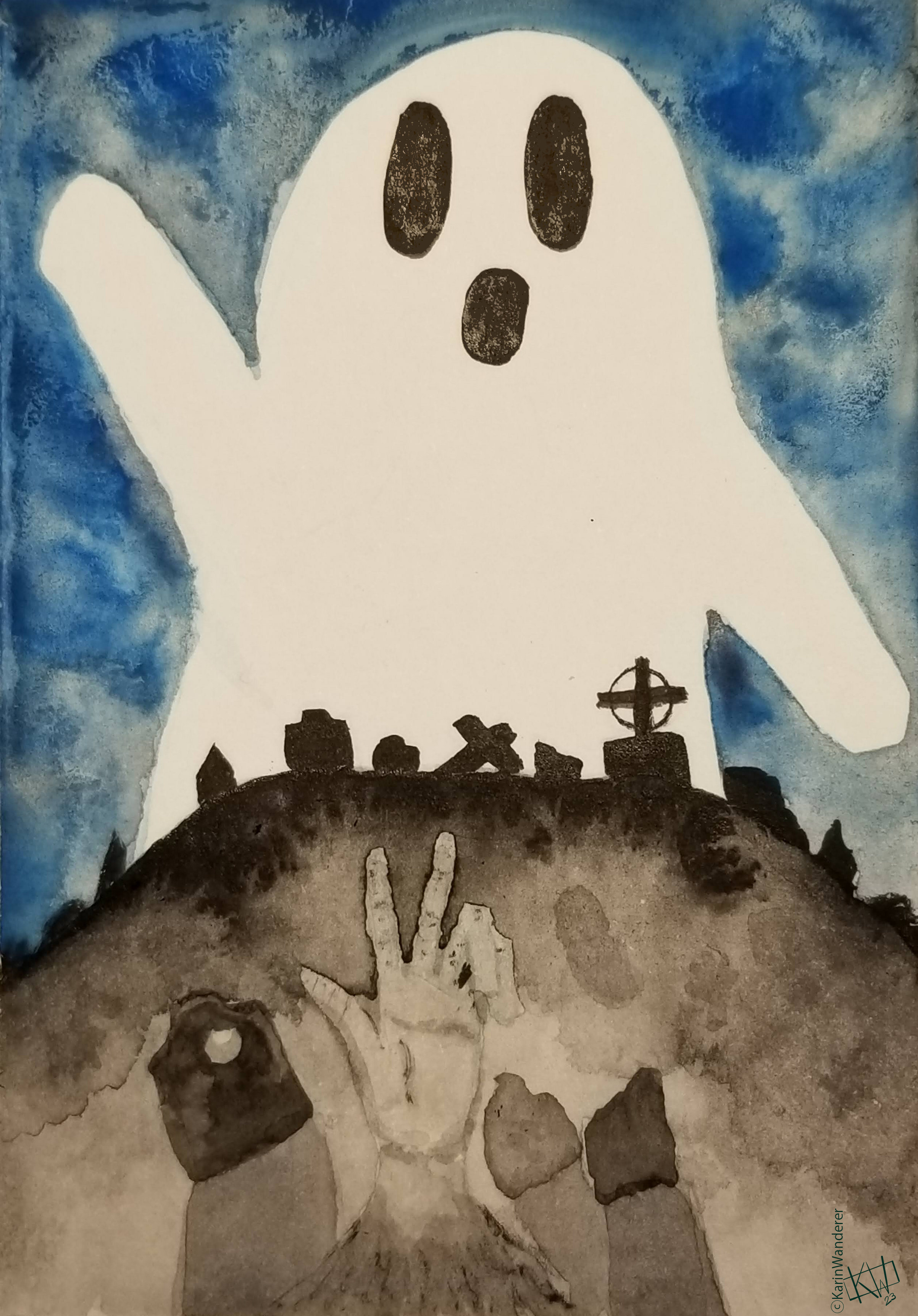 I painted this with sumi & a single shade of blue watercolor.
I painted this with sumi & a single shade of blue watercolor.
Carbon Ink
There are many different kinds of carbon ink. ‘Carbon’ is also often referred to as ‘soot’ or ‘lampblack’. Sumi is a carbon ink. Other carbon inks include India Ink (which actually originated in China). ‘Carbon’ ink is a very literal name for it; the pigment for this ink is made from the soot of burned wood, resin, or oil. Collecting the soot is a painstaking process, & only the first step involved in turning that soot into ink! Ancient recipes for carbon ink involve mixing the soot with water & a binder such as gum arabic, which is also used in watercolors. While many modern ink recipes still use carbon black pigment, their recipes are much more complex. Every carbon ink is different.
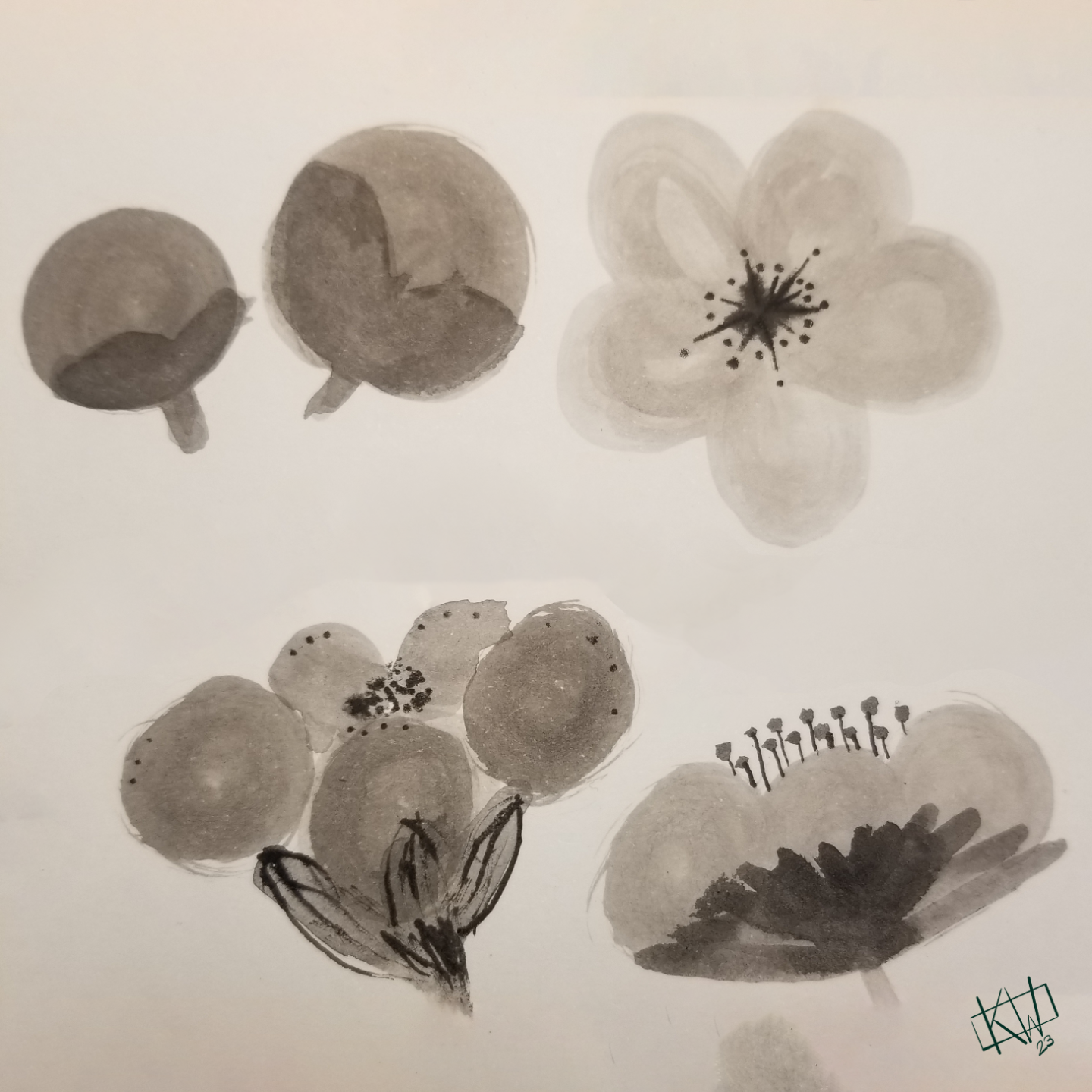 Plum blossoms are a very popular subject for ink painting, & one of my favorites.
Plum blossoms are a very popular subject for ink painting, & one of my favorites.
A Word of Warning!
One thing I would like to make clear: sumi is not vegan. Lots of ink isn’t. If this is important to you, always check thoroughly! Check the type of ink, the brand of ink, & the specific color of ink you are purchasing. I started using sumi because my favorite artist does, back before it ever occurred to me that ink wouldn’t be vegan. (While I am not personally vegan, I do prefer to know when I am using something that contains animal products!)
How Is Sumi Made?
Sumi is made from soot (often from pine resin or rapeseed oil) mixed with animal glue (often egg whites or fish skin). Sometimes incense or other ingredients are added, but they are not required. This makes a soft, claylike lump that is kneaded until it is a glossy, uniform black. It is then pressed into molds and left to dry. It can be used immediately once dried, but sumi sticks are believed to improve with age.
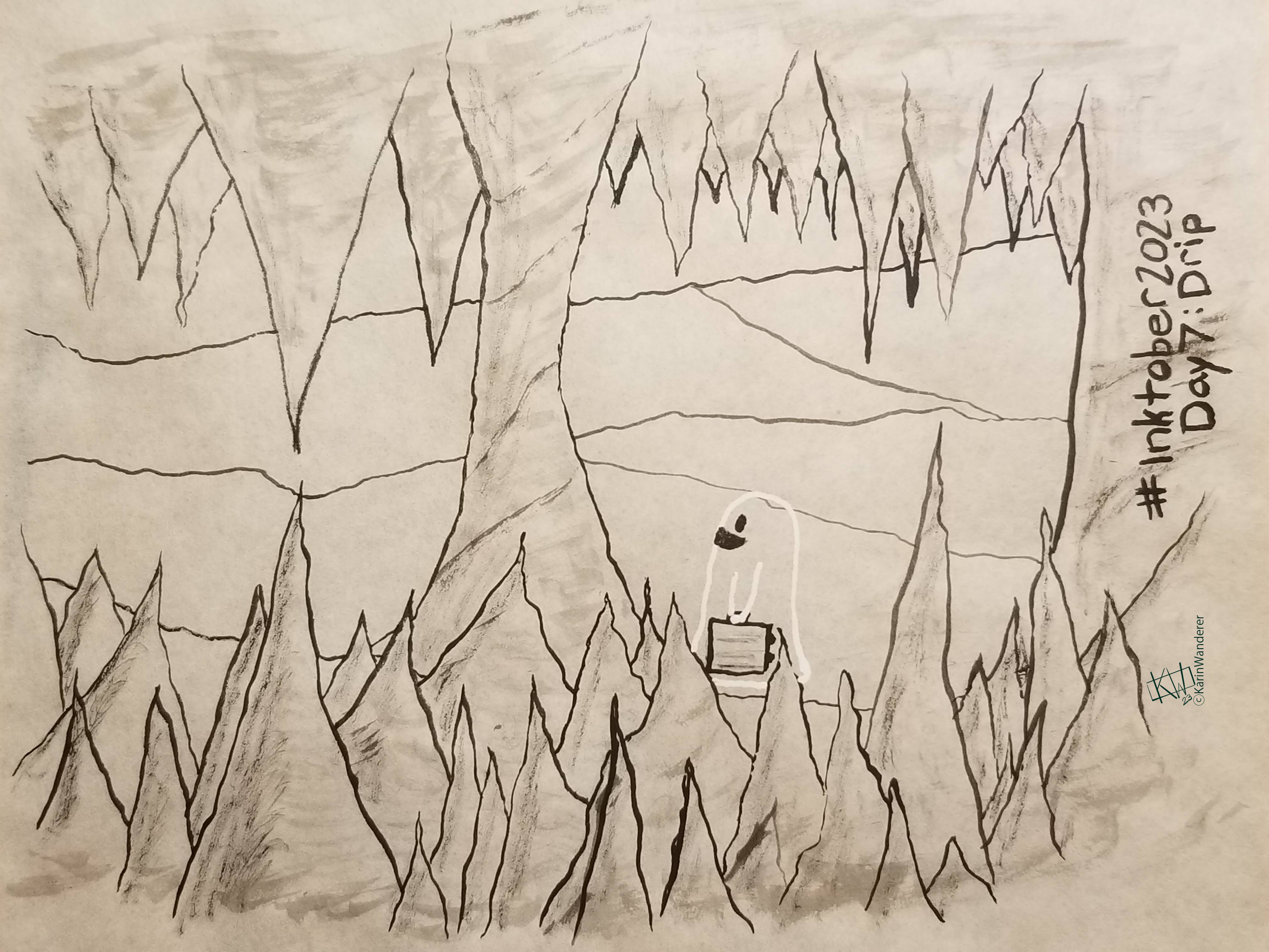 This was painted with sumi & a white gel pen.
This was painted with sumi & a white gel pen.
Sumi Rumors I Keep Hearing But Can’t Prove… Yet.
- A 70-year-old stick is “perfect”, which is to say it is nicely aged but not so old it has become crumbly. A crumbly ink stick is not wasted, it can be mixed with new animal glue and re-formed into a new ink stick. The new stick will then need to be re-aged, as it is the animal glue partially decomposing that makes it “nicely aged.”
- The highest quality sumi is a neutral grey when diluted. High-to-middle quality sumi is often blue-grey when diluted. Low quality is brown in tone.
- The highest quality of undiluted sumi reflects the least light, both wet & dry.
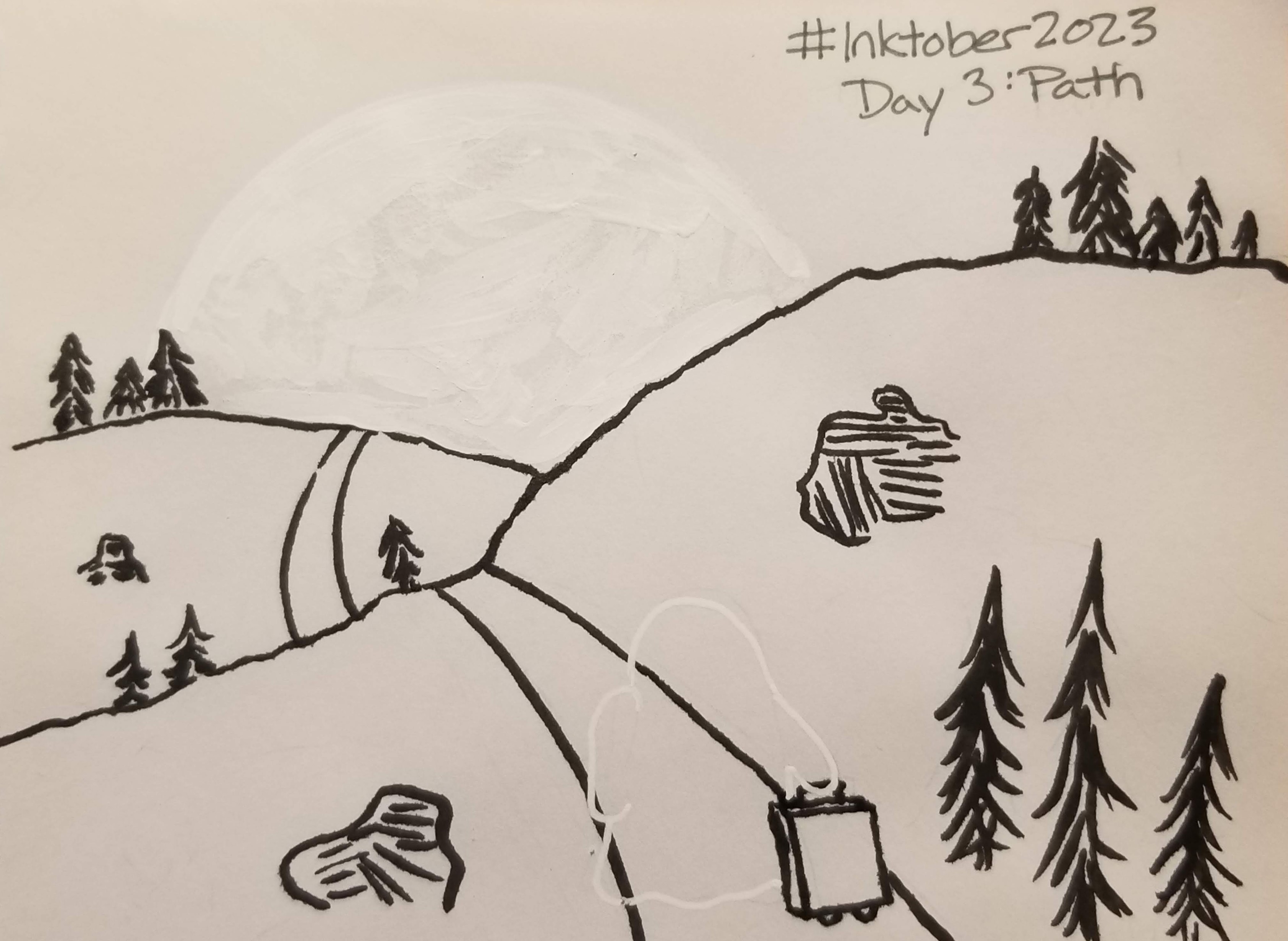 This was painted with sumi & white ink.
This was painted with sumi & white ink.
Is It Always A Stick?
Today, Sumi can be purchased in many forms. The traditional ink stick required you to use a grinding stone to mix the ink with a small amount of water to create the ink. While I do have a few small ink sticks & a stone, most of the ink for my paintings come out of a bottle. (#NotSponsored but I love this ink so I’ll tell you about it anyway!)
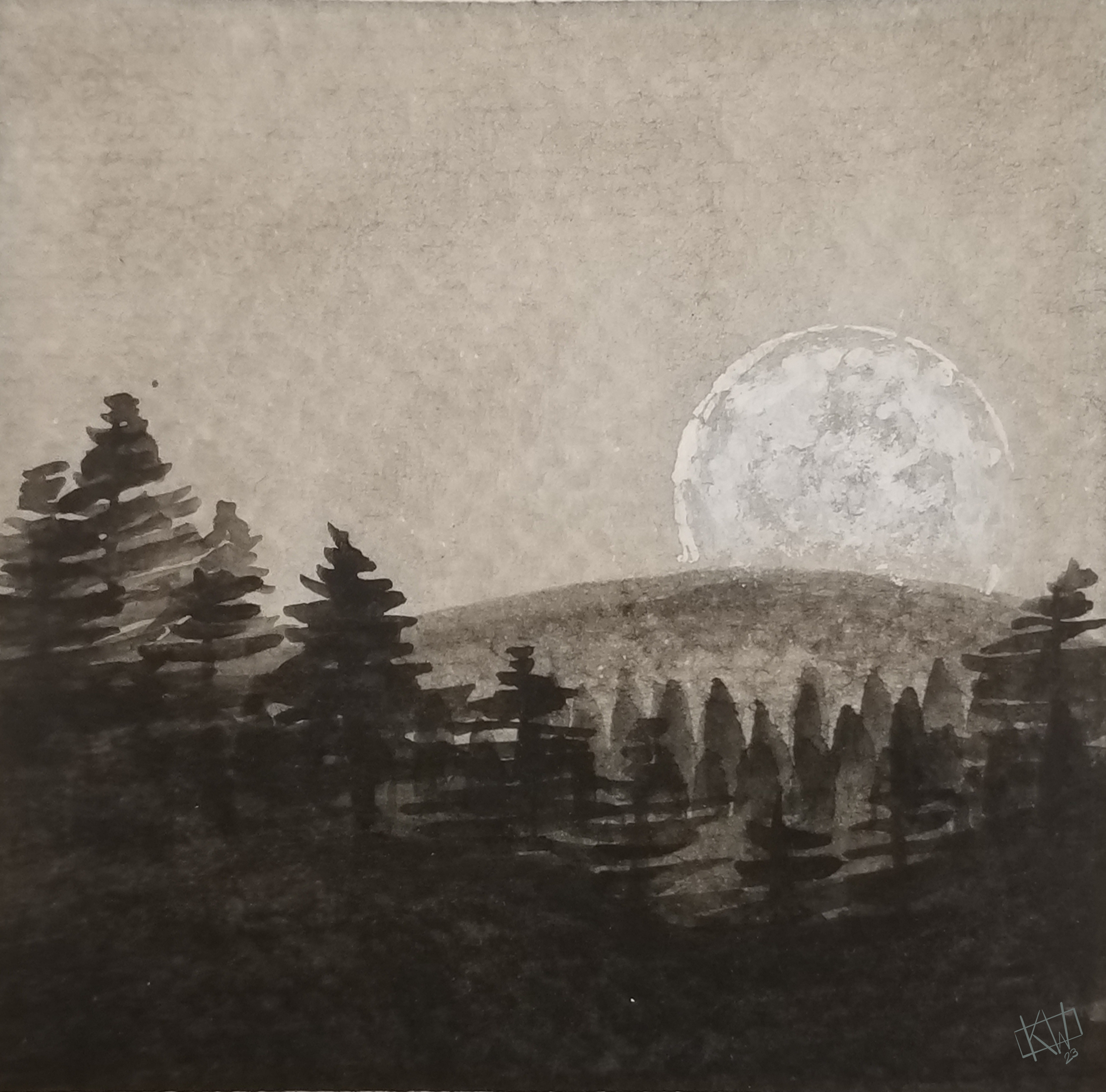 This was painted with the sumi linked above & white gouache.
This was painted with the sumi linked above & white gouache.
Books About Sumi & Ink Painting
(#NotSponsored but I love books so I’ll tell you about them anyway!)
Sumi-e by Shozo Sato
Japanese Ink Painting by Ryukyu Saito
The Art and Technique of Sumi-e by Kay Morrissey Thompson
Special Subjects: Beginning Chinese Brush by Monika Cilmi
The Spirit of the Brush by Sungsook Hong Setton
Art of Chinese Brush Painting by Caroline Self & Susan Self
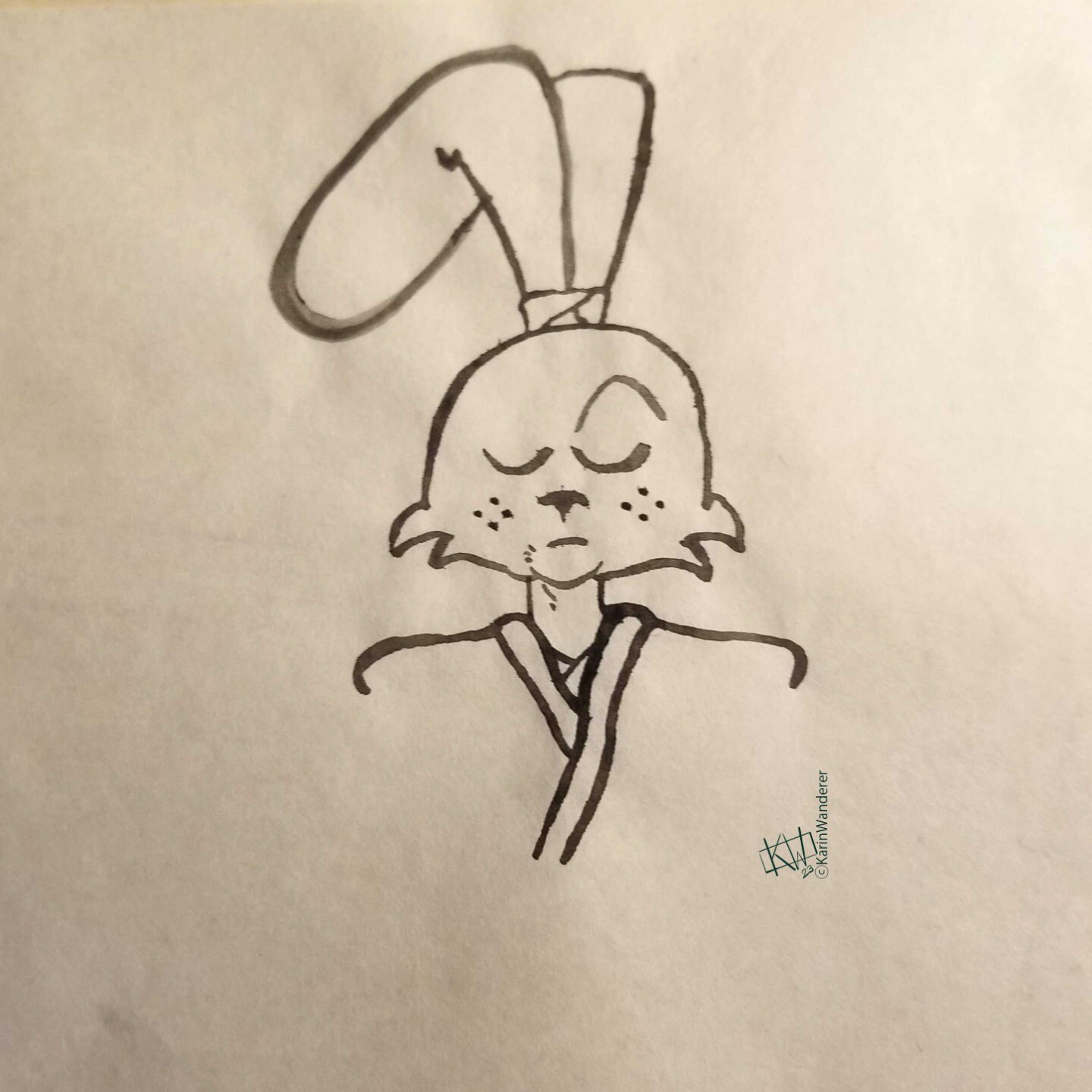 Sumi-e
Sumi-e
Oh no, this is getting way too long! This was supposed to be a short piece about my favorite ink! I guess this is Sumi: Part 1, tune in for Part 2 when I will talk about different styles of ink painting, as well as sumi artists whose work I admire. Have you used this ink? What did you think? Let me know on Mastodon & Ko-Fi!
Get my art on mugs & vinyl stickers in my Shop!
Donate to support my works & get cool perks on Ko-Fi
Join us for #ArtABCs, a year-long art challenge!
Find me
- All pictures posted are my own work.
- All reviews are my own unpaid & unsolicited opinions.